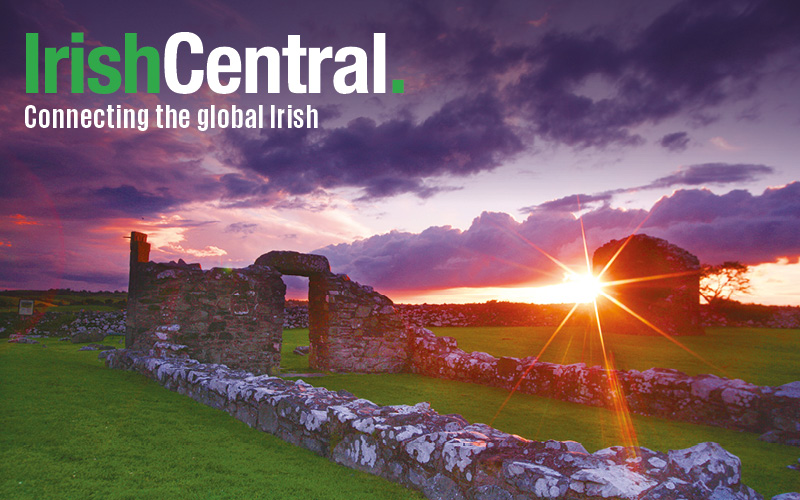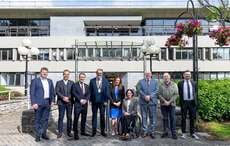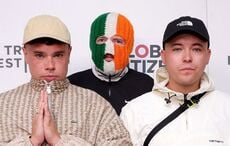Multi-talented Irish storyteller and singer Helena Byrne shares insights into her work and the ancient Irish traditions from which it springs.
The Irish are known to be prolific storytellers, but this gift means so much more than the lore of the Blarney Stone, believed to bestow those who line up to kiss it with the 'gift of the gab'.
In Ireland, the tradition of storytelling dates back centuries, to the seanchaí of ancient Ireland whose job it was to entertain and educate with their tales.
Helena Byrne carries on this noble tradition today through the arts of song and storytelling. Byrne is an accomplished vocalist, storyteller, actress, and songwriter who combines her love of Irish folklore and passion for the performing arts as a modern-day seanchaí and singer for groups of all ages across Ireland.
She also travels to the US for performances, and last year I was lucky enough to catch one of her shows at the New York Irish Center in Long Island City, Queens.
It was a magical evening as Byrne kept the audience wrapt, delighting us with her stories and aweing us with her hauntingly beautiful voice.
Touring North America has had a profound impact on Byrne. She just released a new album, Tóraíocht Shonais’ (Pursuit of Happiness), inspired by the history of Irish emigration to the US and Canada. It features eight songs alongside incredible stories of Irish emigration through the ages: emigration during the Great Famine, traveling on the Titanic, the Irish in the Wild West, John F. Kennedy’s visit to Ireland, and more.
Listen to "No Irish Need Apply," one of the tracks, and you'll get a sense of how deeply moving this is for anyone with links to the Irish diaspora:
We recently caught up about her work, the Irish storytelling tradition, and the new album:
How would you describe what it means to be an Irish storyteller?
I think what it means to be an Irish storyteller has changed greatly over time. Historically, the storyteller, or seanchaí, served a number of roles. Primarily, he or she brought entertainment to long, dark nights by the fireside, but they were also similar to early day journalists. Because they traveled from place to place, they were able to carry news from one village to another.
Today the Irish storyteller has had to adapt to the modern environment of technology and social media. I believe our role has shifted towards keeping these Irish stories, which were such a significant part of Irish culture, alive. That, and of course, entertaining people through the ancient craft of storytelling, which can sometimes be an overlooked medium nowadays.
When did you first get interested in song and storytelling, and how did you develop this gift?
I’ve been a singer all my life. Really since I was a child I loved singing and performing whenever the opportunity arose. And music was always important at home. Both my parents are very musical and I was introduced to so many styles of music from a young age.
My storytelling came a lot later. About ten years ago I was working in Dublin as an actress and as a tour guide on the side. I found that including a story or two into my tours worked really well, but I also loved performing them. Storytelling is far more personal than acting on the stage because it breaks down the fourth wall. You can look into the audiences’ eyes and see every emotion and nuance of the story on their faces. That’s when I started researching the craft, finding more stories to perform and it grew from there.

Do you feel like a part of a larger tradition?
Absolutely. I’m particularly aware of the magnitude of the tradition when telling Irish folklore stories that are sometimes hundreds of years old. It’s incredible, quite humbling in fact, to think of the many storytellers who shared those same stories throughout the generations. Who those storytellers were, where they told them and who their audience was; these are stories in themselves.
On a personal level, I discovered just two years ago that my grandfather had been quite the storyteller in his day. I was gathering stories for an album and by chance, a cousin of mine told me that her father (my uncle) could remember stories about the Fairy Folk and the supernatural that my grandfather used to tell. I collected those stories and regularly perform them.
So I feel that I am not only a part of the larger tradition of Irish storytelling, but part of a family tradition too.
Do you have any advice for people who think they're terrible at telling stories?
Everyone can spin a yarn and has the ability to be a great storyteller. The first and most important step is finding a story that you love and you’re excited to tell. That excitement will naturally shine through in your telling of the story. Also, don’t feel like you need to impersonate other storytellers’ characteristics or movements. Find your own style so that you can feel comfortable in your performance.
What was the inspiration for your new album?
My album ‘Tóraíocht Shonais’, which means ‘Pursuit of Happiness’, is a collection of stories and songs that illustrate the history of Irish emigration to the United States and Canada.
Essentially I was inspired by my Irish American and Irish Canadian audiences, and by political developments over the past two years. I often tell stories of Irish emigration to the New World, such as the story of the Great Famine in the 19th century, which saw over one million Irish people emigrate from Ireland in order to survive, as well as stories of Irish emigration in the 20th century simply to create a better life for themselves in the ‘Land of Opportunity’.
In this day and age where St. Patrick’s Day is celebrated across so many parts of the world, and being Irish is seen as something to be greatly proud of, it’s very easy to forget the prejudice and hardship that Irish people experienced as immigrants. The Irish were the ‘bad hombres’ of their day. So I wanted to create an album that gave a deeper insight into the Irish, and Irish American experience, the Irish immigrant’s hopes, dreams and aspirations. From this, I hope I can inspire people to consider today’s immigrants’ experience. There are so many lessons we can learn from our past.
Thank you, Helena.




Comments